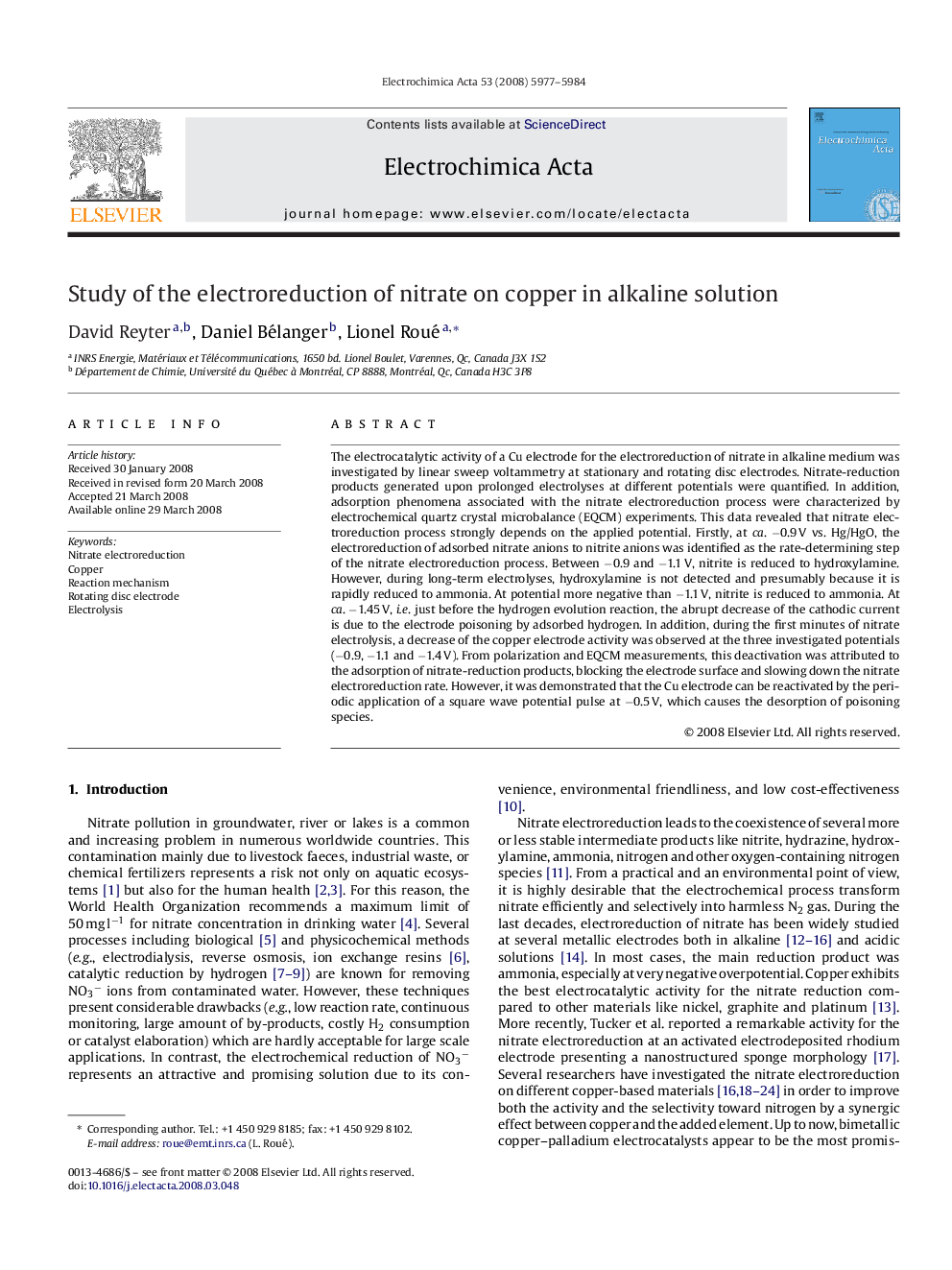| Article ID | Journal | Published Year | Pages | File Type |
|---|---|---|---|---|
| 192049 | Electrochimica Acta | 2008 | 8 Pages |
The electrocatalytic activity of a Cu electrode for the electroreduction of nitrate in alkaline medium was investigated by linear sweep voltammetry at stationary and rotating disc electrodes. Nitrate-reduction products generated upon prolonged electrolyses at different potentials were quantified. In addition, adsorption phenomena associated with the nitrate electroreduction process were characterized by electrochemical quartz crystal microbalance (EQCM) experiments. This data revealed that nitrate electroreduction process strongly depends on the applied potential. Firstly, at ca. −0.9 V vs. Hg/HgO, the electroreduction of adsorbed nitrate anions to nitrite anions was identified as the rate-determining step of the nitrate electroreduction process. Between −0.9 and −1.1 V, nitrite is reduced to hydroxylamine. However, during long-term electrolyses, hydroxylamine is not detected and presumably because it is rapidly reduced to ammonia. At potential more negative than −1.1 V, nitrite is reduced to ammonia. At ca. −1.45 V, i.e. just before the hydrogen evolution reaction, the abrupt decrease of the cathodic current is due to the electrode poisoning by adsorbed hydrogen. In addition, during the first minutes of nitrate electrolysis, a decrease of the copper electrode activity was observed at the three investigated potentials (−0.9, −1.1 and −1.4 V). From polarization and EQCM measurements, this deactivation was attributed to the adsorption of nitrate-reduction products, blocking the electrode surface and slowing down the nitrate electroreduction rate. However, it was demonstrated that the Cu electrode can be reactivated by the periodic application of a square wave potential pulse at −0.5 V, which causes the desorption of poisoning species.
